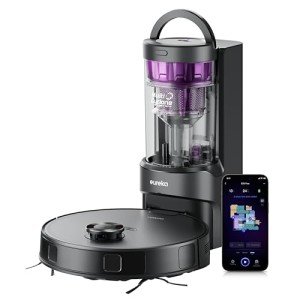20 Things That Only The Most Devoted Robot Vacuum Cleaner Price Fans Are Aware Of
Understanding Robot Vacuum Cleaner Prices: A Comprehensive Guide
In current years, robot vacuum cleaners have changed the way people clean their homes. Their ease of use, convenience, and advanced technology have made them progressively popular. Nevertheless, with a plethora of models and functions available, potential purchasers often find themselves asking an essential concern: What should I expect to spend for a robot vacuum cleaner? This post intends to clarify the expenses associated with robot vacuum, factors that affect their costs, and ideas for finding the right device for your budget.
The Price Range of Robot Vacuum Cleaners
Robot vacuum cleaners can differ widely in price. Here, we break down the common price range for different classifications:
| Category | Price Range | Description |
|---|---|---|
| Entry-Level | ₤ 100 – ₤ 250 | Basic features, ideal for little spaces, very little smart innovation. |
| Mid-Range | ₤ 250 – ₤ 500 | Boosted cleaning capabilities, much better navigation, some smart features. |
| High-End | ₤ 500 – ₤ 1,000+ | Advanced mapping, powerful suction, web connection, and app integration. |
Entry-Level Models
Affordable robot vacuums are ideal for those who require a basic cleaning tool without high-end features. They often handle difficult floors well but may deal with carpets and are typically less long lasting.
Mid-Range Models
These vacuums frequently come equipped with much better suction power and more intelligent navigation systems, making them ideal for larger homes with combined floor covering. Numerous designs in this variety deal Wi-Fi connectivity and smart device control.
High-End Models
High-end robot vacuums are developed for serious cleaning enthusiasts. They typically offer innovative mapping technology, powerful suction, and built-in electronic cameras for improved navigation. In addition, lots of high-end designs enable vacuuming on a schedule and even have the ability to clear their dust bins instantly.
Aspects Affecting Robot Vacuum Prices
Understanding the elements that can influence the price of a robot vacuum can assist consumers make more educated getting decisions. The following list describes some essential features that can affect price:
-
Brand Reputation: Established brands usually carry a greater price due to their reputation and reputable client assistance.
-
Cleaning Technology:
- Suction Power: More powerful models will be more expensive.
- Navigation Systems: Advanced models with better barrier detection and mapping capabilities cost more.
-
Smart Features: Models that provide connectivity to apps, voice control compatibility, and advanced scheduling alternatives tend to be priced greater.
-
Battery Life: Longer-lasting batteries generally result in a greater price, as they allow the vacuum to clean larger locations without requiring to recharge.
-
Dustbin Size: Larger dustbins can be more hassle-free for customers, promoting a greater price point.
-
Additional Features: Some vacuums use mopping capabilities, self-cleaning functions, and high-efficiency filters, which can increase their price.
Budget vs. Features: What to Consider
When buying a robot vacuum, it’s vital to weigh your budget against the features you most desire. Here are several considerations to assist you make an informed decision:
1. Evaluate Your Home’s Needs
-
Size of Space: Larger homes may gain from advanced vacuums that can cover more ground without frequent charging.
-
Floor Types: If your home consists of a mix of carpet and difficult floorings, choose a vacuum developed for both.
2. Determine Desired Features
- Choose which functions are necessary for you, such as scheduling, app connection, and cleaning modes.
3. Price vs. Durability
- While a higher investment can yield longer-lasting designs, it’s worth considering lower-cost choices if you’re unpredictable about long-lasting use.
Frequently Asked Questions (FAQs)
Q1: Are robot vacuums worth the financial investment?
A1: If you lead a busy lifestyle or have mobility issues, a robot vacuum can save significant time and effort in cleaning, making them a beneficial financial investment.
Q2: How frequently should I change a robot vacuum?
A2: Depending on the model and usage, a robot vacuum normally lasts in between 3 to 5 years. High-end models might last longer with proper maintenance.
Q3: Can a robot vacuum totally replace a conventional vacuum?
A3: While robot vacuums effectively deal with day-to-day cleaning, they might not replace conventional vacuums for deep cleaning, especially in multi-level homes or areas needing comprehensive care.
Q4: What is the average life expectancy of a robot vacuum?
A4: The lifespan of robot vacuums differs by model, however many last between 3-5 years with regular upkeep, like dustbin emptying and filter changes.

Q5: Do robot vacuums deal with carpets?
A5: Yes, but the efficiency will depend upon the design. Higher-priced models typically have better suction power to tidy carpets effectively.
The marketplace for robot vacuum varies, with models to fit numerous spending plans and cleaning needs. Whether customers are searching for a basic cleaning tool or an advanced device equipped with various smart features, comprehending the price varieties and factors affecting expenses is essential. With mindful consideration of individual needs and financial restrictions, prospective buyers can discover a robot vacuum that will enhance their cleaning regular and provide long-term fulfillment.

